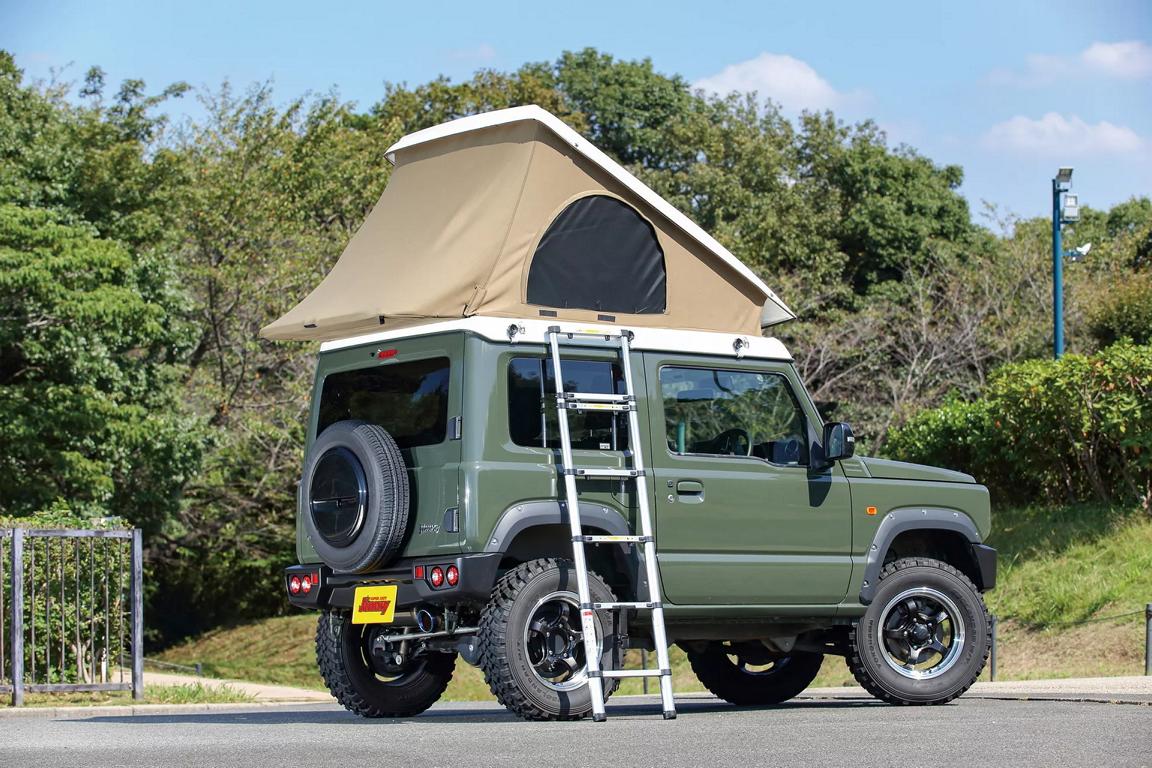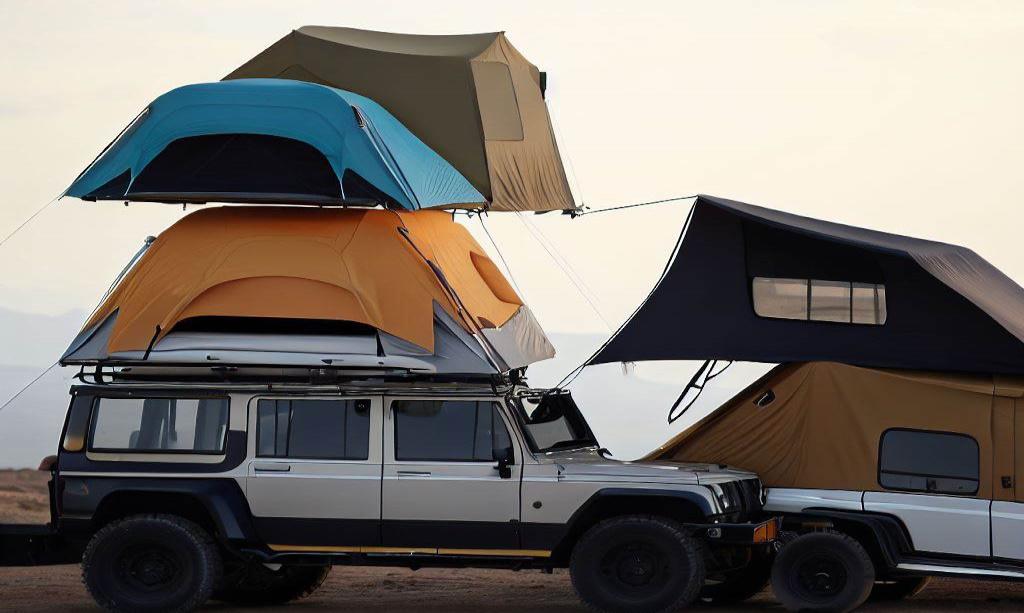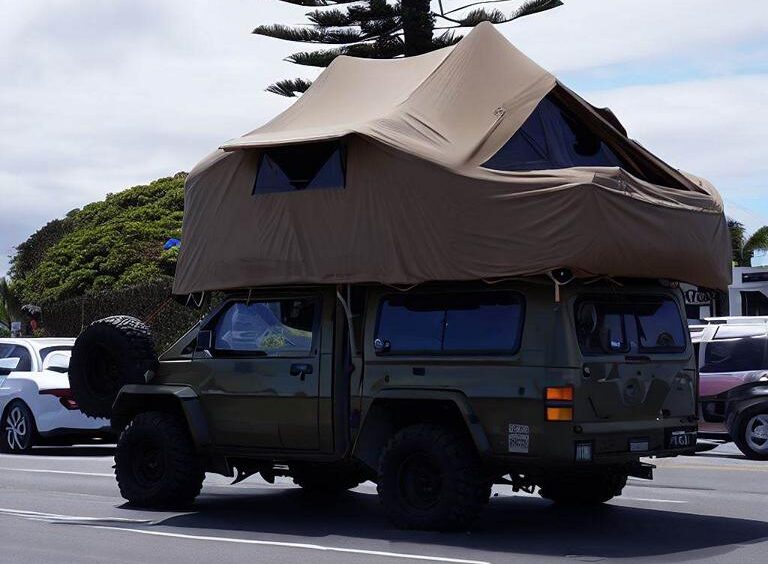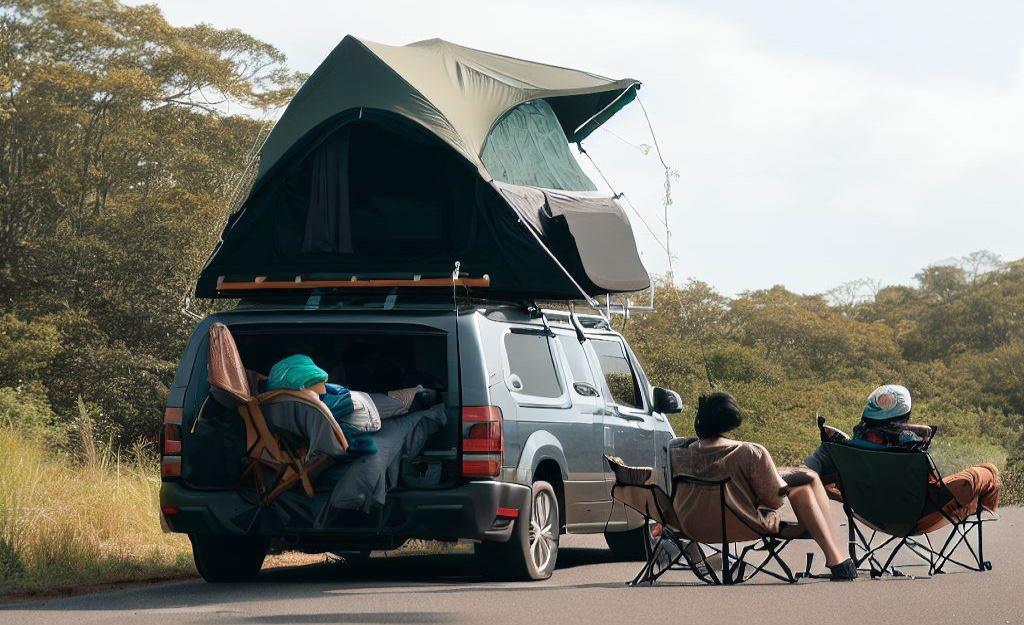The ongoing enthusiasm for camping and caravanning has also led to an upsurge in rooftop tents. The appeal of roof tents lies in the fact that you always have a sleeping accommodation with you that can be set up quickly and protects you from wet ground and various animals. However, rooftop tents are not exactly cheap and come with some disadvantages. Roof top tents vary in size, shape and construction, each with their own strengths and weaknesses.
What are the variants?
Hard shell roof tents, which when unfolded do not protrude beyond the traffic area occupied by the vehicle, enable rapid assembly using a crank or gas pressure springs at practically any (parking) location. On other models, the roof is placed parallel to the floor. With folding or folding roof tents, which are usually lighter, the base area can expand to twice the area of the car roof or even more depending on the model after folding out. This means more space in the tent, but limits the choice of location. Hybrid tents combine hard shell and folding roof tent concepts. Inflatable tents replace the aluminum poles with air tubes and offer the advantage of being lighter.
Costs
Regardless of which type of roof tent you choose, the costs are significantly higher than for a conventional ground tent. Prices for new roof tents are usually over €1.000. If you have higher expectations of the tent, ladder and transport packaging, you have to dig deeper into your pocket and expect costs in the middle to even high four-digit range. If no suitable roof rack is available, you have to factor in an additional 200 €. When buying a rack, it is also important to note that the screw backs of the tent must be compatible with the diameter of the roof rack struts. Not all combinations are compatible with each other.
roof load and overload
If you intend to transport larger pieces of luggage on the roof of a car, you must pay close attention to the roof load. In many cases, this is a maximum of 75 or 100 kilograms. The weight of the carrier system and roof tent should not exceed the value specified by the vehicle manufacturer. However, the maximum value given in the owner's manual refers to the dynamic roof load, ie for the vehicle in motion. The reason for this is that the increased center of gravity changes the driving dynamics. When braking or cornering, the forces acting on the roof rack can increase significantly, which has a significant impact on handling.
During the journey, strict attention must be paid to compliance with the weight limits. On the other hand, when stationary, the load on the car roof is much more flexible. However, only a few manufacturers specifically state what their vehicles – especially those that are suitable for expeditions – can withstand. Manufacturers of roof tents assume that the static load can be significantly higher than the dynamic. So there is no risk of the vehicle collapsing under the weight of the sleeping occupants. Nevertheless, one should not overdo it with the load. So it's inappropriate to pack 500 kilograms on the roof of a VW Polo.
| Rule | Details |
|---|---|
| vehicle width | Vehicle and load together must not be wider than 2,55 meters. |
| vehicle height | Vehicle and load together must not be higher than 4 meters. |
| Rear overhang without marking | An overhang of up to one meter at the stern is permitted without the need for marking. |
| Marking in case of further overhang | If the load protrudes more than one meter, it must be marked with a spread out bright red flag measuring 30 x 30 cm or a bright red cylinder measuring 30 cm in height and 35 cm in diameter. |
| Lighting in poor visibility and darkness | In poor visibility and in the dark, a red light and a red reflector are required. Both must not be higher than 1,50 meters above the road. |
| Overhang limitation depending on the route length | A projection of three meters is permitted within a distance of up to 100 kilometers. For distances over 100 kilometers, an overhang of only 1,50 meters is allowed. |
Higher consumption, reduced speed
Regardless of the model, it is clear that even a folded tent on the car roof increases air resistance and thus fuel consumption. With electric cars, a roof tent leads to a shorter range. This should be taken into account when planning your trip. And after the trip, it is advisable to dismantle the tent again to save electricity or fuel. If you want to use it on many weekends, you may shy away from setting up and dismantling. But then the everyday journeys have to be slower than usual: the tent manufacturers usually recommend a maximum speed of 120 km/h.
Where can I stay in the roof tent?
Campgrounds and private pitches provide a hassle-free overnight option for rooftop tents. This type of tent is actually ideal for wild camping and spontaneous overnight stays anywhere, but in Germany and many countries in Western and Central Europe you are often moving in a legal gray area. In Germany, it is specifically permitted to rest or stay overnight on public roads for a short period of time, but only if this serves to restore your ability to drive. However, if you spend several days in a rest area or parking lot with a lake view and table and chairs like on a campsite, you will probably quickly have problems.
And finally ...
- With a roof tent you are flexible and independent, but you should be aware that with this freedom comes limitations and additional responsibilities. Correct assembly and loading of the tent, consideration of the roof load and compliance with speed limits and legal regulations are essential. Despite everything, the adventure with a roof tent can be a unique and unforgettable experience.
Of course, that wasn't the end of it!
tuningblog has many more news around the topic Camping and RV at the beginning. Do you want to see them all? Just click HERE and look around. Our focus is especially on converted Campers & mobile homes. This means that you will find fewer reports on classic standard motorhomes here, but much more we try to present specially modified specimens that show that the topic is also Tuning is represented in the camping & RV scene. Below is an excerpt of the last campers and mobile homes.
other related posts
|
Scout Campers shows "Tuktut construction" for medium-sized pickups! |
|
|
Cooperation from Tchibo & Bürstner: Campervan Copa C500 / C530! |
 tuningblog.eu Your magazine about tuning the car
tuningblog.eu Your magazine about tuning the car








